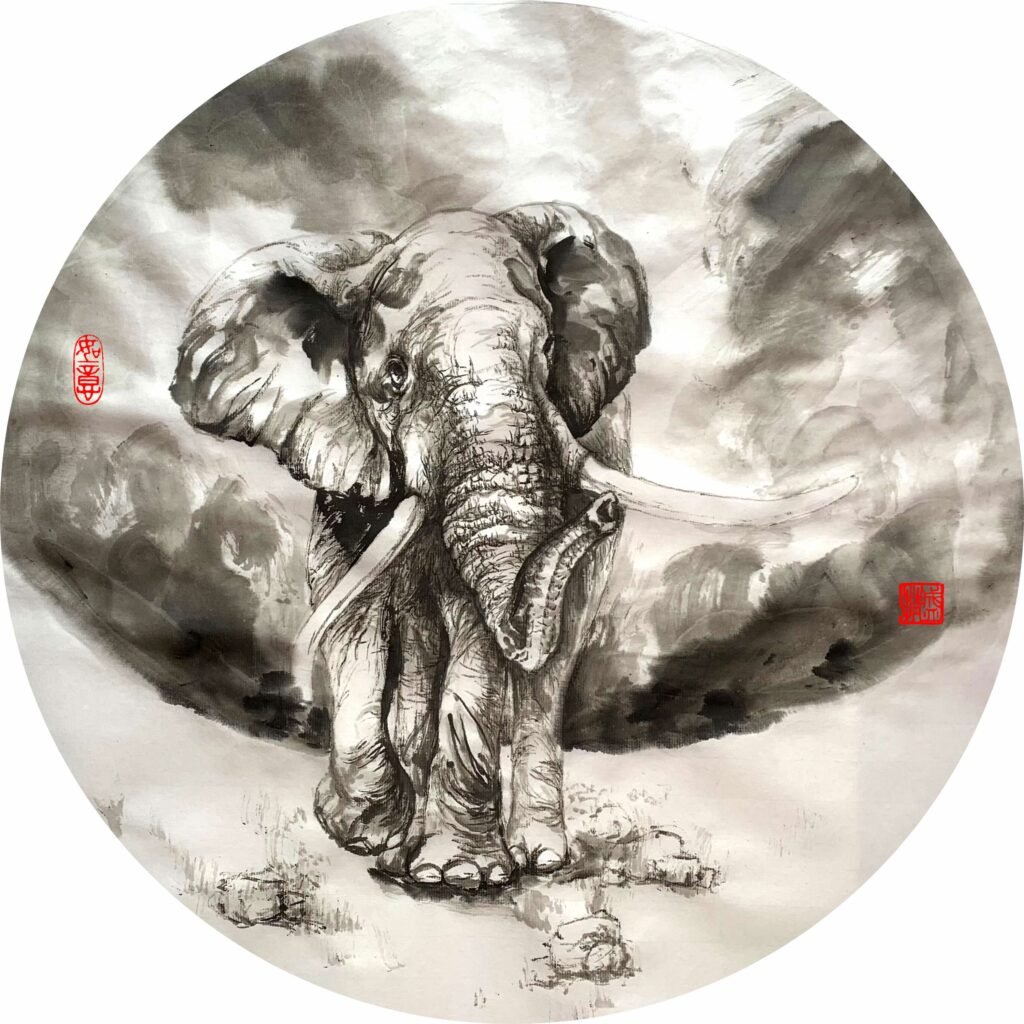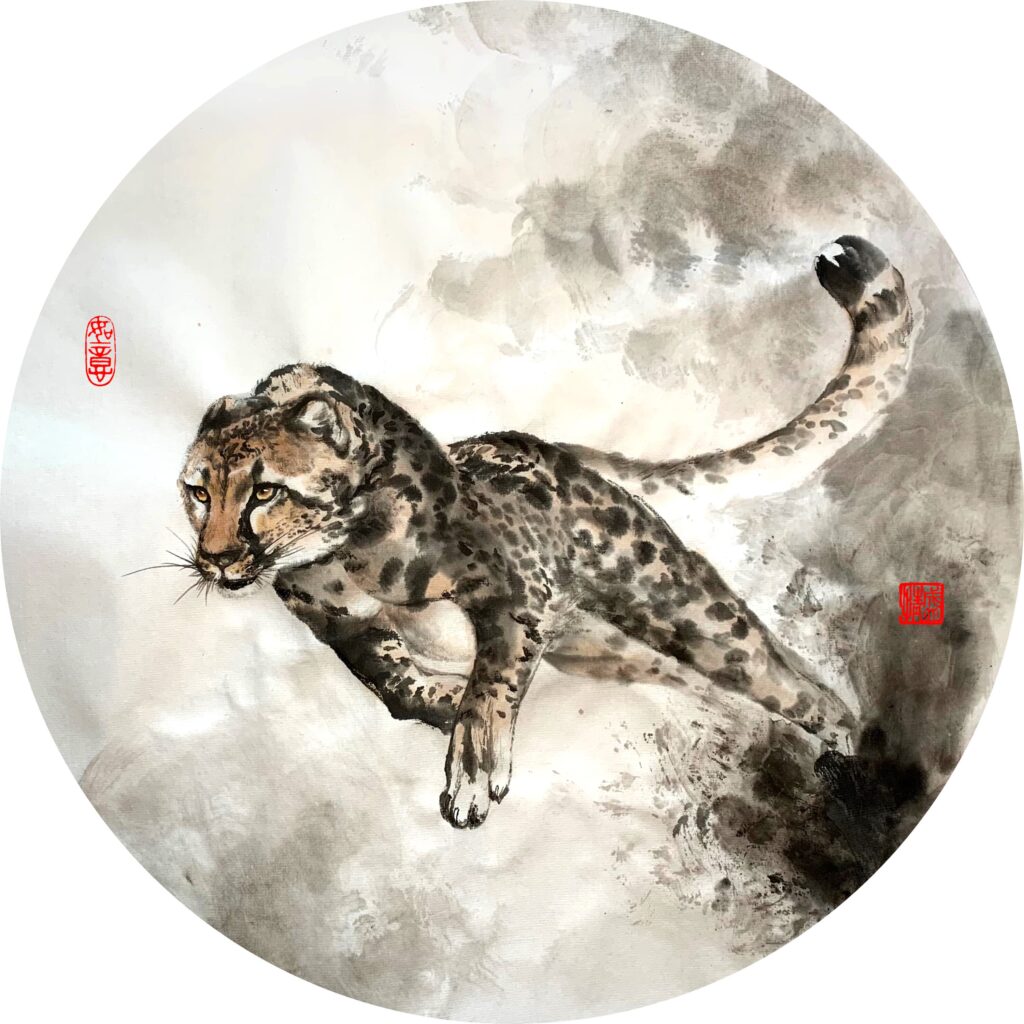Continuing from the previous topic on the seals, let us look at how the seals are used. The correct usage of seals affect the overall quality of the artworks, and even though we see many possible examples of all kinds of ways of sealing, it is absolutely crucial to understand the foundations of the art of sealing, and upon which we can fully engage our creativity.
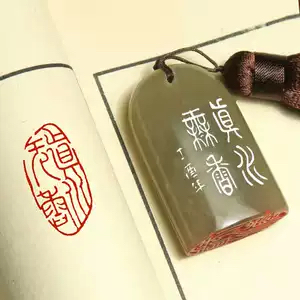
Size
The size of a seal should match the characters in an artwork. Generally speaking larger artworks may have larger writings on them, and therefore will be complimented by relatively larger seals. If there are small characters written (such as a poem), it is then common to include (a group of) small seals instead. The seals need to balance the painting, so larger seals often appear on the bottom of an artwork, if the artwork has more than one seal. In the case that an artwork was created by a few artists, then the various seals should match in size.
Number
In the ancient time people preferred odd number of seals in an artwork. One or three is the most common. Now this preference is less followed, but the guideline is “less is more”, so when in doubt, go for fewer seals. Also do not use the same seal twice in the same artwork.
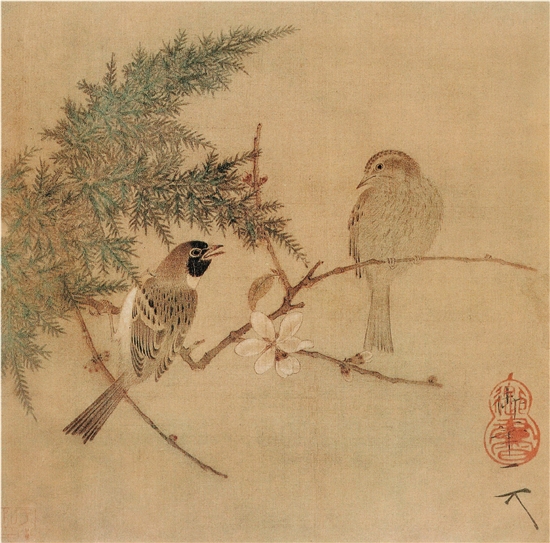
Placement
The location of a seal affects the balance of the artwork, therefore the seals are often used as part of the composition. The loose space shall be left loose, while the tight space perhaps should be made even tighter with an additional seal. Normally there are name seals and the leisure seals, but within the leisure seals there are several functions that the seals fulfil. We will discuss this in detail in the coming post.
Weight
The seals carry “weight” in its color and strength that appears on the surface of an artwork. The Yin style (white lines) usually weigh heavier than the Yang style (red lines). Depending on the emotion of the artwork, we need to choose the corresponding seals for it. For example, the rough artworks may work better with the Yin style seals, whereas the delicate paintings most likely match the Yang seals better. Treat the color of the seal as another color added into the artwork, where between the red and the ink there shall be harmony.
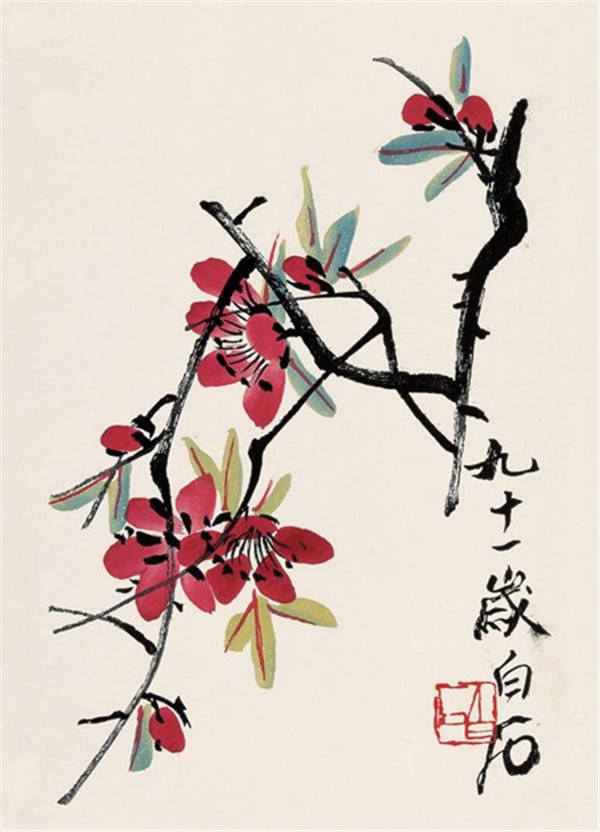
Meaning & Script
The meaning of the leisure seals shall match the overall meaning of the artwork, which is the reason why we need several leisure seals. The overall harmony and balance is the key message, and whatever we add in terms of seals should contribute to it instead of harming it. The script of the characters on the leisure seals are often different, some are cursive, some are fine, and others are rough. These different scripts should suit the atmosphere generated by the artwork too, a very rough seal may not work best with refined painting style.
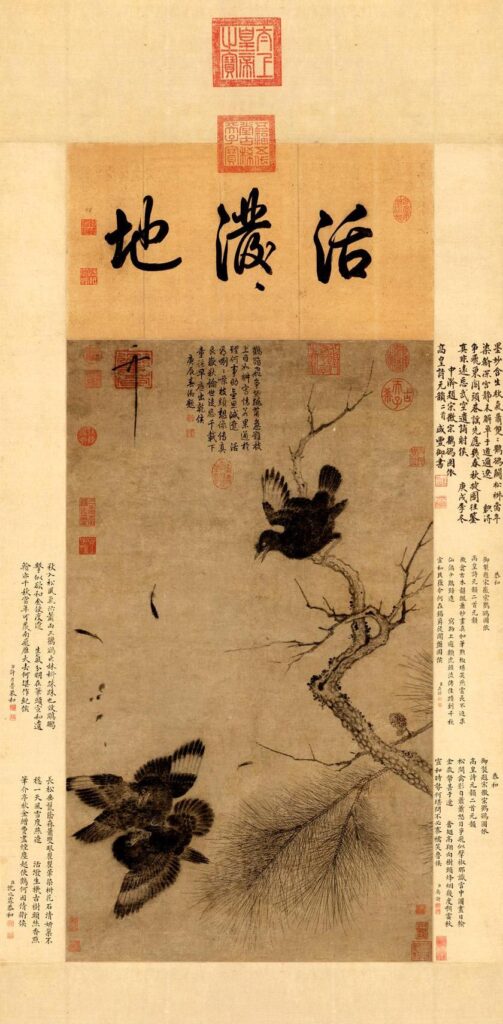
Knowing everything that we have discussed above, let us put the ideas in practice. The image above captured one of the national treasures, an amazing painting from an outstanding artist – Emperor Song Hui Zong. Horrible as he was as an emperor, his taste in art was impeccable. The huge amount of seals all around came from collectors over the past thousand years, so were most of the writings. Could you tell which seals and perhaps writings were original and why? We will discuss this further in the next post as we continuously dive into the usage of seals!
Enjoy such cultural discussions? Have comments? I look forward to hearing from you!
Related Products From Our Shop
-
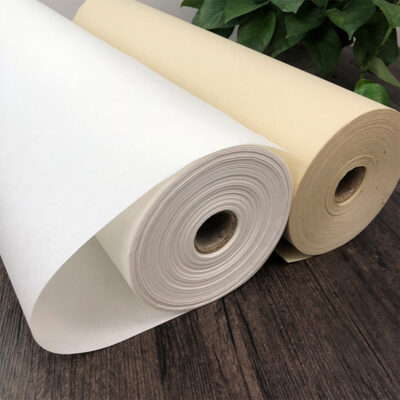 100m Rice Paper Roll
100m Rice Paper Roll -
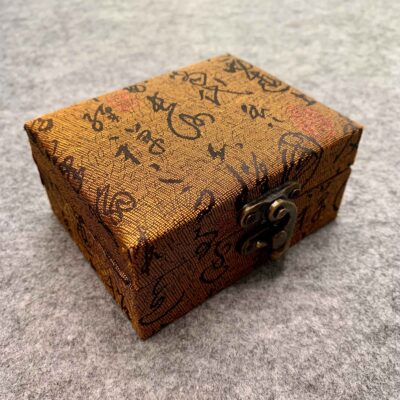 Brocade Box for Seals
Brocade Box for Seals -
 Calligraphy Rice Paper for Poem (with Grids)
Calligraphy Rice Paper for Poem (with Grids) -
 Cloud Dragon High Fiber Rice Paper
Cloud Dragon High Fiber Rice Paper -
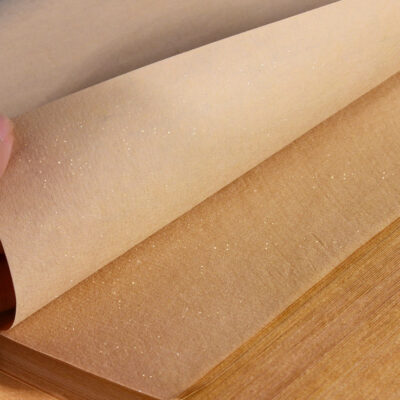 Colored Ripe Rice Paper with Pearly Sparkles
Colored Ripe Rice Paper with Pearly Sparkles -
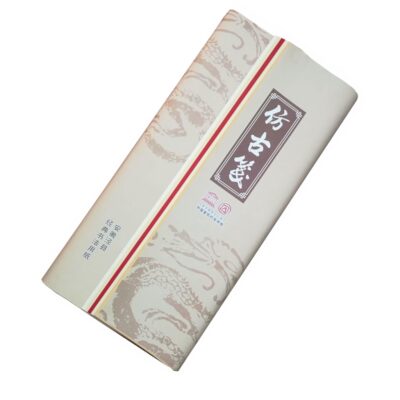 Half-Raw 5 Colored Rice Paper Pack
Half-Raw 5 Colored Rice Paper Pack -
 Hand-Carved Customise Seal, Name Seal
Hand-Carved Customise Seal, Name Seal -
 Hand-Carved Seal, Leisure Seal
Hand-Carved Seal, Leisure Seal -
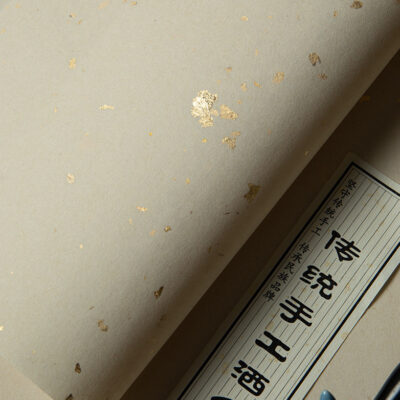 Light Brown Rice Paper with Golden Sparkles
Light Brown Rice Paper with Golden Sparkles -
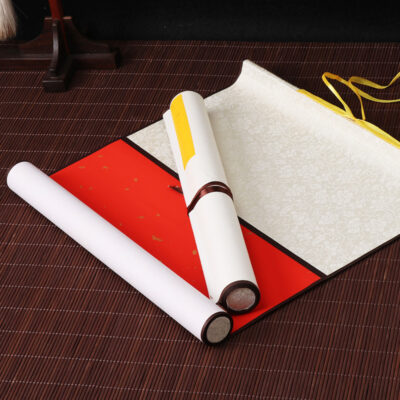 Pre-Mounted Rice Paper Scroll
Pre-Mounted Rice Paper Scroll
Buy Artworks | Learn Brush Painting | Learn Chinese Calligraphy
